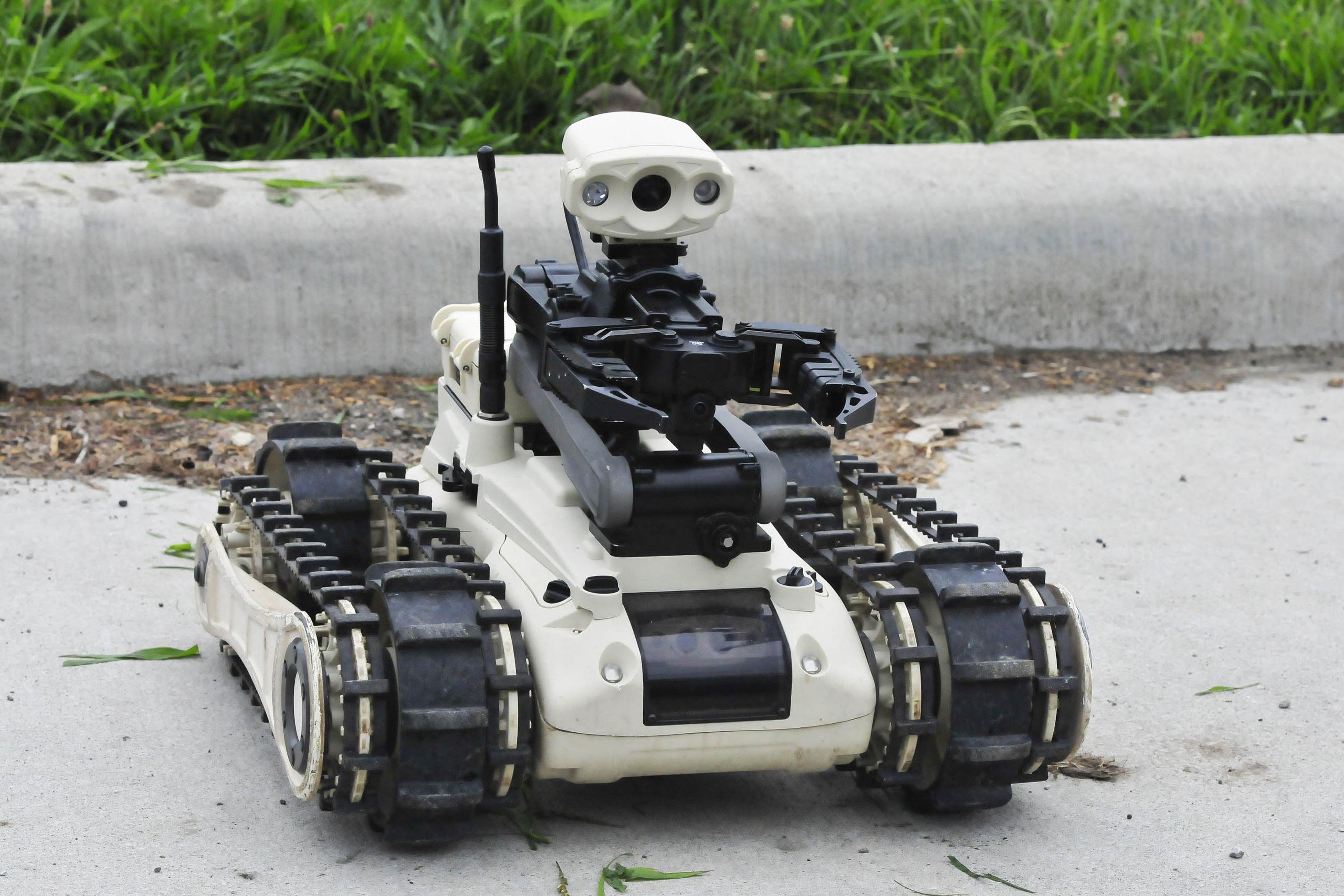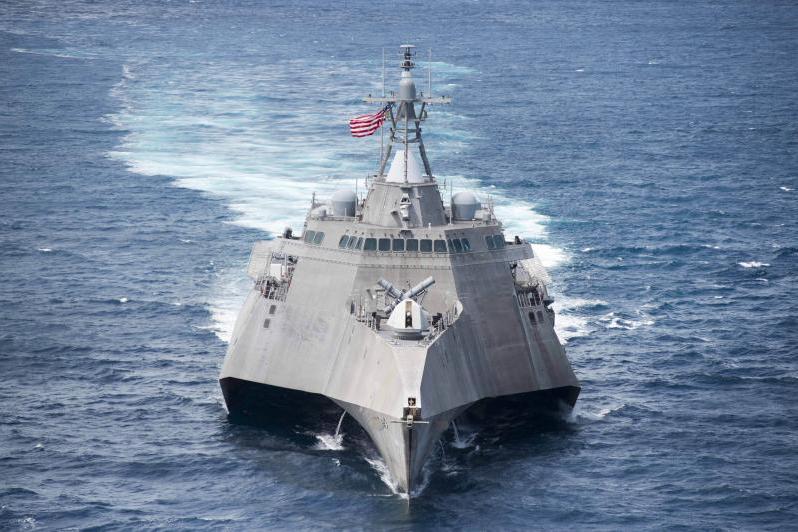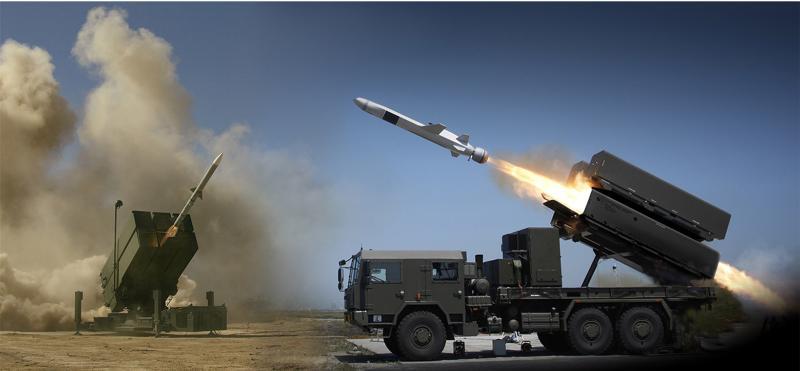العربات البرية غير الآهلة: أنظمة متطوّرة للتصدي للتهديدات الناشئة
فيما يترسخ عمل العربات البرية غير الآهلة بشكل جيد في العمليات العسكرية الحديثة، تثابر التكنولوجيا على التطور استجابة للدروس المستقاة من العديد من ميادين القتال، مع التركيز على التراكبية، والمرونة وسهولة الاستخدام، سواء في العمليات التقليدية على غرار التخلص من القنابل، والناشئة مثل الدعم القتالي المسلح ودعم الخدمة الميدانية بما في ذلك حماية القوى وإعادة الإمداد.
وفي مثال مهم على المقاربة الأولى، تم اختيار شركتي «إنديفور روبوتكس» Endeavour Robotics، سابقاً I-Robot Defense & Security، و«كينتيك أميركا الشمالية» QinetiQ North America للتباري على مرحلة الإنتاج الخاصة ببرنامج «النظام الروبوطي المشترك الفردي» CRS-I الخاص بالجيش الأميركي، بحسب ما أعلنت وزارة الدفاع الأميركية في الثلاثين من آذار/ مارس الفائت.
Weighing under 25lb, CRS-I is intended to be a “back-packable” robot that can equipped with a set of easily swappable mission modules and payloads. The robot is intended to provide dismounted soldiers with stand-off short range Intelligence, Surveillance and Reconnaissance (ISR), remote Chemical, Biological, Radiological, and Nuclear (CBRN) detection, Explosive Obstacle Counter Measure (EOCM) and Explosive Ordnance Disposal (EOD) capabilities.
The requirement calls for CRS-I to be interoperable with several other unmanned systems through the use of a common controller. These include the Man Transportable Robotic System MTRS UGV and the Raven and Puma small UAVs to a level defined by NATO STANAG 4586 through a universal controller, with others such as the Common Robotic System-Heavy (CRS-H) EOD robot and the Squad Multi-purpose Equipment Transport (SMET) robotic mule to follow.
As is common in competitive US procurements, Endeavour and Qinetiq are to share the Engineering and Manufacturing Development (EMD) phase in which their performance will be crucial to the final decision as to which will supply more than 3,000 of the robots, which is scheduled to be announced in the second quarter of the US Government's 2019 financial year.
Combined, the EMD contracts are worth more than $429 million and are to run over 10 months and will involve each contractor delivering two “test assets” for the government to evaluate. In addition, they are also to deliver seven CRS-I systems and another eight production representative examples to support government activities including testing and provide support for interoperability and security, including cyber security evaluations.
Once EMD is complete, the government will evaluate the test results and revised price proposals to determine which contractor will be awarded the low-rate initial production contract.
"The CRS-I program helps our military take another step in bringing interoperable open architectures rapidly to the field. We need to make sure our latest robots not only perform the mission, but also are easy for users to control and adapt quickly to changing needs," said Endeavor Robotics President Tom Frost.
This followed the September 2017 award to Endeavour of another major contract from the US Army in the form of the Man Transportable Robotic System Increment II, under which it is to build a medium-weight robot the role of which is to detect and confirm a range of potentially lethal threats to soldiers at a greater stand-off range. This contract is reportedly worth US $100 million with potential for another $58 million if options are exercised.
October of last year saw the launch of the Transportable Interoperable Ground Robot (TIGR) by Roboteam at the Association of the US Army (AUSA) event in Washington DC, the company emphasising the versatility of this tracked UGV, which weighs 74 kg including batteries but can carry a payload of nearly twice that at 150 kg.
Roboteam offers TIGR for ISR and situational awareness in addition to EOD missions, describing it as a two-man carried UGV with a modular design that allows for add-ons, sensors and future technology integration, claiming that it provides “innumerable capabilities other mid-sized robotic platforms are unable to achieve in the theater of war”.
A further claim is that TIGR is a highly mobile, all-weather system capable of operating in any terrain. While the company doesn't provide the slope angle figures typically used to characterise off-road performance, they do say that it will ascend and descend 45°, 24.5 cm high stairs and climb over a 30 cm high obstacle. They also quote a range of 1,300 m, the limitation being line-of-sight communications, and a default operating time of up to eight hours.
The observation head includes visible light and thermal primary cameras, rear-facing high-definition colour cameras, and forward facing HD and thermal cameras for driving, while cameras on the manipulator arm feature additional illumination including white and near infra-red lights. A two-way audio link is also included.
Weighing 14 kg, the manipulator arm provides a wide range of articulation including continuous rotation, shoulder pitch and yaw, elbow pitch, wrist yaw and continuous roll. Fully extended, it measures 1.5 m long, collapsing down to 80 cm, while the maximum height with the arm vertically extended and including the height of the platform is quoted as 1.8 m.
As with the boom of a crane, the weight the manipulator arm can pick up is affected by the distance of the load from the fulcrum, and varies from 19 kg right in front of the platform of 7 kg at full extension.
Ironclad is a new small tracked UGV intended to take on some of the most dangerous jobs currently faced by soldiers. Small enough to work in tight urban streets and alley ways, but can also handle what BAE calls extreme cross-country terrain, it can be equipped for combat, casualty evacuation and reconnaissance missions, says the company.
Unveiled in September 2017, Ironclad has unique capabilities for a UGV, including silent running, enough battery energy for a range of 50 km, and protection from blast and small arms fire. It is designed to employ a set of mission systems through a hardware interface that allows mission equipment to be attached and swapped out quickly when necessary. This interface supplies power as well as data connections for command and control data from the main vehicle chassis, which houses the battery and a two-way remote control unit and makes provision for hardware required for autonomous capability to be added later.
A second, modular, connection system provides for two vehicles to be connected together so that they can handle additional loads, including a specialised stretcher, according to according to Craig Fennell, Future Programmes Director at BAE Systems Land in the UK.
“The next step is for Ironclad to act autonomously as part of a battlegroup, interacting with other vehicles and ground troops to follow mission objectives. This is being tested on existing vehicles as the technology – already at a high state of readiness – is developed.”
A reconnaissance package is under development. Designed to enable soldiers to examine hazardous environments before setting foot in them, streaming imagery and audio directly to them. There is also a casualty evacuation package that includes a stretcher attachment that enables the UGV to free up two soldiers who would otherwise be needed to carry the casualty. Thirdly, an area denial package features a remote weapon station combined with imaging and audio sensors, and, finally, and explosive ordnance disposal package provides similar capabilities to those of existing bomb disposal robots, but with the flexibility to change roles, according to the company.
“Ironclad – while being a product in its own right – is also a step towards the battlefield of the future where we expect fleets of unmanned air and ground vehicles to work together, sharing situational awareness and pursuing combat objectives”, Craig Fennell said.
“There will always be a human in the loop, but increasing use of autonomy and unmanned vehicles means they can focus on key decisions and have more options to avoid putting people in dangerous situations.”
The idea of fitting UGVs with weapon systems is not a new one, but recent months have witnessed a spate of new ones announced.
Revealed last September, Meteor Aerospace's Rambow six-wheeled diesel-electric all-terrain UGV puts this capability front and centre with the touted capability to carry a machine gun in a remote weapon station in addition to a missile launcher for border and facility defence missions. The 3,500 kg vehicle is also offered for other missions including ISR, logistic supply, medical evacuation and unspecified “special” missions.
Rambow has a flat, open payload area like the bed of a pick-up truck that can accommodate cargo, missile launch containers or act as a launch and recovery area for a small VTOL multicopter drone acting as an additional ISR sensor platform.
Sensors include a panoramic camera system for constant 360° video coverage as well as a high-definition electro-optical system on a telescopic mast that extends to 3 m in height.
The propulsion system is centred on a diesel generator and the charging system for the battery that powers a hub motor in each of the wheels. Suspension is hydraulic and fully independent to maximise its performance in rough off-road terrain, further aided by automatic obstacle detection avoidance in autonomous mode. Rambow is also designed with a low silhouette and a small acoustic signature to make it harder to detect.
Meteor Aerospace claims a payload of 1,000 kg and maximum speed of 50 kph and a range on battery power of 50 km, which extends to 160 km on the generator, while the 3.7 m long, 2.2 m wide vehicle will climb a 60% gradient and traverse a 40% side slope.
Rambow can be driven from a twin-screen remote control station, follow or lead another vehicle, or operate autonomously on a pre-planned route, using its obstacle avoidance capabilities.
Rheinmetall has also been working on tactical UGV capabilities and in September of last year outlined its Multi-Mission Unmanned Ground Vehicle (MMUGV) solution that is intended to enable the platform to carry out missions ranging from logistics mule duties to surveillance and force protection in support of mounted and dismounted forces in dangerous and hard to reach areas.
As is rapidly becoming the norm with these systems, the MMUGV platform is designed to allow operators to install payloads themselves to adapt it to mission requirements rapidly.
The UGV-S variant, for example, is optimised for surveillance tasks including perimeter observation, reconnaissance and scouting, and mounts a sensor head on a telescopic mast atop an eight-wheeled vehicle.
Force protection is the forte of the UGV-P variant, which mounts a remote weapon station on a more heavily protected version of the same platform optimised for perimeter protection, escort, target acquisition and engagement tasks.
Communications relay tasks can also be undertaken, facilitated by a radio antenna also mounted on a telescopic mast.
Cargo mules can follow soldiers, tracking a squad leader, for example, while avoiding obstacles. In map guidance mode, the vehicle will follow instructions, allows soldiers to teach the vehicle a route or set of behaviours that it will then repeat on command.
System available on a wide variety of platforms, whether built as dedicated UGVs or converted from manned operations and in a range of sizes right up to main battle tanks.
Earlier this year, Qinetiq and the UK government's Defence Science & Technology Laboratory (DSTL) provided some more detailed insight into how such vehicles are likely to be used in action in the near future. On 09 April, the company announced that they had completed the first phase of DSTL's Autonomous Last Mile Resupply programme as one of a number of teams selected to take part in the development of technology to deliver vital supplies to troops as the tactical edge.
The first phase field test took place at Qinetiq's Hurn proving ground in February using the TITAN tracked UGV developed jointly by Qinetiq and Milrem. During the test, the TITAN was tasked from a remote ground control station to navigate autonomously over a route in mixed terrain to demonstrate its ability to deliver supplies to troops in dangerous environments with limited, difficult access.
TITAN navigated with the aid of a camera system supplied by a team from Aberystwyth University, which they managed to integrate in the remarkably short time of two days, according to Qinetiq.
Robotic companions for soldiers on the battlefield have finally emerged from the realms of science fiction and, while they are not yet firmly established in many roles, they are well on their way and the shape of things to come is clarifying.

















